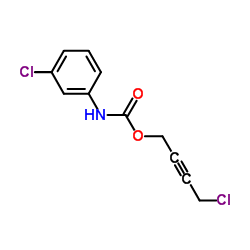Silylation of iron-bound carbon monoxide affords a terminal Fe carbyne.
Yunho Lee, Jonas C Peters
文献索引:J. Am. Chem. Soc. 133(12) , 4438-46, (2011)
全文:HTML全文
摘要
A series of monocarbonyl iron complexes in the formal oxidation states 0, +1, and +2 are accessible when supported by a tetradentate tris(phosphino)silyl ligand (SiP(iPr)(3) = [Si(o-C(6)H(4)PiPr(2))(3)](-)). X-ray diffraction (XRD) studies of these carbonyl complexes establish little geometrical change about the iron center as a function of oxidation state. It is possible to functionalize the terminal CO ligand of the most reduced carbonyl adduct by addition of SiMe(3)(+) to afford a well-defined iron carbyne species, (SiP(iPr)(3))Fe≡C-OSiMe(3). Single-crystal XRD data of this iron carbyne derivative reveal an unusually short Fe≡C-OSiMe(3) bond distance (1.671(2) Å) and a substantially elongated C-O distance (1.278(3) Å), consistent with Fe-C carbyne character. The overall trigonal bipyramidal geometry of (SiP(iPr)(3))Fe≡C-OSiMe(3) compares well with that of the corresponding carbonyls, (SiP(iPr)(3))Fe(CO)(-), (SiP(iPr)(3))Fe(CO), and (SiP(iPr)(3))Fe(CO)(+). Details regarding the electronic structure of the carbyne complex have been explored via the collection of comparative Mössbauer data for all of the complexes featured and also via DFT calculations. In sum, these data point to a strongly π-accepting Fischer-type carbyne ligand that confers stability to a low-valent iron(0) rather than high-valent iron(IV) center.
相关化合物
| 结构式 | 名称/CAS号 | 分子式 | 全部文献 |
|---|---|---|---|
 |
燕麦灵
CAS:101-27-9 |
C11H9Cl2NO2 |
|
Synthesis of polyynes to model the sp-carbon allotrope carby...
2010-11-01 [Nature Chemistry 2(11) , 967-71, (2010)] |
|
Calcium-decorated carbyne networks as hydrogen storage media...
2011-07-13 [Nano Lett. 11(7) , 2660-5, (2011)] |
|
The pressure tunning Raman and IR spectral studies on the mu...
2005-03-01 [Spectrochim. Acta. A. Mol. Biomol. Spectrosc. 61(5) , 995-1000, (2005)] |
|
[Infrared and Raman spectra studies on isomultinuclear organ...
2000-10-01 [Guang Pu Xue Yu Guang Pu Fen Xi 20(5) , 702-3, (2000)] |
|
Chromium-carbyne complexes: intermediates for organic synthe...
2007-01-01 [Angew. Chem. Int. Ed. Engl. 46(10) , 1719-22, (2007)] |